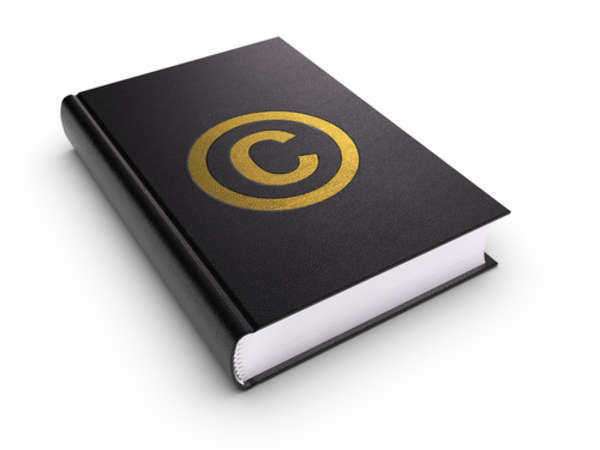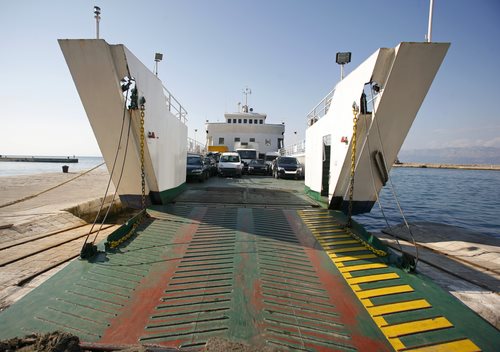Ultimate Antitrust Outline



What is Thinkorswim?
Thinkorswim was one of the first website to specialize in online brokerage. The company was founded in 1999 and gave a large amount of choices to independent stock and option traders. It was one of the first websites to incorporate technology to make investing simpler for private investors.
The company was bought by TD Ameritrade Holdings Inc in 2009, and the company sold for about $606 million. TD Ameritrade is since one of the top performers in the online investing market, but the company faced several problems after it acquired Thinkorswim.
Problems after the Integration
Shortly after Ameritrade acquired Thinkorswim, there was speculation into a software glitch that may have caused a security breach. Additionally, there was an investigation into certain accounts not working. Some options traders claimed they were unable to perform certain trades, and as a result, lost a significant amount of money.
Ameritrade has acquired over 250,000 accounts, and some brokers were claiming losses over $100,000. Ameritrade admitted that there were some problems when the accounts were transferred, but they reported that the fixed the problem and all clients could place trades in the middle of August starting in 2011.
Rules when Using Thinkorswim
Even though the company was acquired by TD Ameritrade, clients can still use the company’s platform. Make sure you regard the following rules when using the trading platform:
The Day Trading Margin Rule
On September 28, 2001 the NYSE and FINRA began to require a $25,000 equity requirement for “pattern day traders.” If a client’s holdings fall below $25,000 and they have opened or closed on the same day for three days out of five days, the client is not allowed to open new positions until their account reached $25,000 or more or five days have gone by since the last opening.
Also, a “pattern day trader” can only open new positions up to four times between the account equity and maintenance margin requirements.
Rules for Order Routing
· All order placed before 8:30 a.m. CST will take effect during the NYSE’s hours of 8:30 a.m. to 3:00 p.m. CST. You have the option to place orders before and after the designated time, but you have to use the extended hours feature.
· No order will be filled by the ISE if the order is deviated more than $1 from the actual market price.
· The flat fee stock trading rate is $9.95 up to 5,000 shares market or limit only, and the OTCBB only accepts limit, market, or stop orders.
· If you use the cancel/replace feature and the feature is used on an existing order, the replacement classifies as a new order.
There are more order routing rules, and you can view these rules on the company’s website.


Ariba is one of the largest software and information technology companies, and it is located in Sunnydale, California. Ariba was acquired by SAP AG on May 22, 2012 for $4.3 billion, and now operates under Germany’s subsidiary, SAP America, Inc.
Ariba was the largest and most successful “cloud-based business commerce network” before it was acquired by SAP AG in Germany. According to the company’s website, a business joins the cloud-based network every 8 ½ minutes. Over 730,000 businesses connect with trading partners using the cloud platform, and these businesses are located in 186 different counties.
According to company’s website, the businesses connected to the cloud platform will transact over $822 million, exchange about 60,000 purchase orders, and save about $82 million in supply costs in the next 24 hours alone.
Because of the dominance of Ariba in the market, it’s no surprise that SAP acquired the company—even if that meant buying shares at $45.00. SAP’s customer base is one of the largest in the world already, for about 63 percent of all the world’s transactions pass through a SAP system. These companies include the largest buyers and sellers in the world, and the acquiring of Ariba will encourage even more companies to make transactions through SAP.
In a press release by Ariba on May 22, 2012, CEO Bob Calderoni commented, “In our personal lives, networks are playing an increasingly important role in how we connect, share, and shop—bringing more insight and efficiency into every we do. Businesses are looking for the same connectedness, insight, and efficiencies in the processes and collaboration with customers, suppliers, and partners beyond the walls of their companies. By combining Ariba’s open global trading network and SAP’s solutions and analytics, we are ushering in a new era of business-to-business collaboration and driving new levels of productivity.”

Addamax was a software company founded by Dr. Peter A. Alsberg in 1986. In 1991, the company filed an antitrust lawsuit against the Open Software Foundation (OSF), Hewlett-Packard Company and Digital Equipment Corporation.
In 1987, the company began to develop security software used in Unix operating systems—which is a common operating system used for large computers. The security software restricted the use of sensitive information and blocked outside access.
During the time of development, the company chose to produce primarily B-1 software that is required by government users. From 1988 to 1989, the company developed the B-1 security software for two different versions of Unix.
As the company was developing security software, the inventor of Unix, AT&T, began to restrict the number of licenses it issued because a large amount of software modifications became available through individual licensees. AT&T began to develop a close relationship with Sun Microsystems, and many hardware manufacturers believed that AT&T was attempting to form a single version of Unix to dominate the market.
Large computer manufacturers like Hewlett-Packard and Digital Equipment Corporation decided to form the Open Software Foundation for non-profit research initiatives, and one of the objectives of was to create a competitive operating systems that could compete with the Unix system being developed by Sun Microsystems and AT&T.
OSF-1 was undergoing development in 1989, and OSF decided to include B-1 level security software. Only three companies produced the software at the time: AT&T, Addamax, and SecureWare, Inc. “Request for technology” bids were sent to the companies—except for AT&T—and OSF accepted a bid from SecureWare on December 22, 1989. Even though the security software from Addamax was more sophisticated, they asked for a higher price.
Addamax continued sales of the B-1 software after losing the bid to OSF, but they began to turn away buyers in 1991 in order to devote funds to the development of new security software. The company then filed a complaint against OSF, Hewlett-Packard and Digital in April of 1991 because they stated the companies violated both state and federal antitrust law.
The company accused OSF with horizontal price fixing, boycotting, and other joint ventures that violated the Sherman and Clayton Acts. The claims accused the defendants of driving down the price of security software below the free-market level to restrict competition from Addamax.
The trial lasted for 12 days between November 18 and December 16 of 1996. Witnesses were called including Dr. Alsberg, experts, and a customer. The district court found that OSF and other defendants did not directly cause free-market values to drop, and the defendants were not charged.
Addamax appealed the district court’s findings on the basis that the findings were not detailed and the court failed to address any evidence that was favorable to the prosecution. However, the district court was not required to consider findings on every detail in the case because Addamax was responsible for most of the discovery in the first place. The original findings of the district court were affirmed in the appellate court.

Hologic
Hologic is a NASDAQ-traded technology company which manufactures technology used in the treatment of various women's health issues. It has been involved in a number of patent infringement lawsuits, both as the plaintiff and defendant.
In 2012, Hologic was involved with three separate patent infringement lawsuits. Early in 2012, Hologic discontinued manufacture of Adiana, a method of permanent birth control for women. Adiana works by inserting two small silicone tubes into the fallopian tubes via the vagina, making the use of surgical incision unnecessary. Once inserted, scar tissue is created in the fallopian tubes, blocking them off and making fertilization impossible.
Hologic was sued by Conceptus over Adiana and was awarded $18.8 million by the jury. In order to forego payment, Hologic agreed to discontinue manufacture of the drug and give Conceptus the intellectual property rights to all items related to Adiana. As part of this agreement, the two companies also agreed to terminate a false patent marketing case.
In September of 2012, Hologic lost another lawsuit filed by Smith & Nephew. The lawsuit concerned two separate patent infringements, which were consolidated into a single trial which took place in Massachusetts District Court. The lawsuit concerned the MyoSure Tissue Removal Device, which is used in pre-operative procedures concerning the removal of cancerous tissues. The patent for MyoSure was purchased by Hologic as part of the acquisition of another company, Interlace Medical. The jury awarded Smith & Nephew $4 million in lost profits. Hologic plans to appeal the verdict and will continue to manufacture and sell the product.
In October of 2012, Hologic won one of the preliminary stages of a lawsuit filed against Becton Dickinson & Co. The lawsuit concerned five separate infringed patents related to automated nucleic testing, as well as products used in the treatment of gonorrhea and chlamydia. Hologic won its case relating to claims for three of the patents, though two of the claims were dismissed. Hologic filed motions seeking summary judgment to all five of these patents and will proceed with the case.
Some of the issues that remain to be resolved in the case of Hologic v Becton Dickinson & Co. concern whether the latter company's actions have led to its customers infringing upon the patent possessed by Hologic, whether the infringement committed was done deliberately, and what the size of the damages awarded to Hologic should be. Hologic has filed a request seeking that whatever financial award is ordered be tripled. Hologic is also requesting a permanent injunction to prevent the possibility of further infringement.
Another lawsuit with which Hologic has been involved in the past was initiated in 2008 and achieved a resolution in 2011. This lawsuit was filed against SenoRx, Inc. and concerned infringements of patents for technologies related to the treatment of breast cancer via brachytherapy, an alternative treatment which eliminates the need for external radiation surgery. The company lost its initial lawsuit but won the case on appeal.

What is Wisconsin Energy Corporation?
The company is based in Milwaukee, Wisconsin, and it provides electric to customers in Wisconsin and the upper part of Michigan. The company has two subsidiaries, We Energies and Wispark, LLC. We Energies is mainly responsible for natural gas projects and the construction of generating plants, while Wispark, LLC is mainly responsible for real estate initiatives.
According to its website, Wisconsin Energy Corporation (WEC) ranks among the top of 4,300 companies for its governance practices by an independent rating agency called GovernanceMetrics International. WEC has received a perfect 10 rating 30 out of 31 times in the last eight years. It’s the only company in the world to receive such distinction under the rating agency.
Notable Achievements within the Last Decade for Wisconsin Energy Corporation
The company has completed impressive projects since 2005, and these accomplishments are listed below:
· 2005, the first of two 545-megawatt natural gas units comes into operation at the Port Washington Generating Station
· 2006, We Energies records the highest-ever demand for electricity, a total of 6,505 megawatts on July 31
· 2007, WEC sells the Point beach Nuclear Plant to FPL Energy for $934 million
· 2008, the Blue Sky Green Field Wind Energy Center, comprised of 88 turbines on 10,600 acres, begins operation and produces up to 145 megawatts
· 2008, the second 545-megawatt natural gas unit begins service, and the $669 million project is completed on time
· 2010, the first 615-megawatt coal unit at the Oak Creek expansion site begins operation on February 2
· 2011, the second 615-megawatt coal unit at the Oak Creek expansion site begins operation on January 12
· 2011, 90 turbines at the Glacier Hills Wind Park begin supply energy to Randolph and Scott in Wisconsin
Lawsuit against Wisconsin Energy Corporation
In April of 2012, a lawsuit was settled between employees and Wisconsin Energy Corporation because the company mishandled retirement plan accounts. The class action claimed that the company failed to credit participants for partial year’s service, failed to provide interest credits established in contracts, mishandled the early commencement discount during the plan formula for the lump sum option, and more.
Notice was sent to a large number of employees, and Alan M. Downes and Terry Kumbera represented the 31 plaintiffs during the class action lawsuit. Initially, the plaintiffs and their attorneys asked for a settlement of $45 million, but court ruled the settlement was too high.
The court finally approved a settlement of $13.5 million. Attorneys were awarded 30 percent of the settlement and received costs and expenses of $524,003.65 as well. The company was responsible for the litigation costs of $477,753.65 and the notices costs of $46,250. The named plaintiffs received $7,500 from the total settlement amount for working with the plaintiff’s counsel. The company denied the claims from the plaintiff’s but the court ruled in the plaintiff’s favor.

Australian Small Scale Offerings Board Summary
The Australian Small Scale Offerings Board (ASSOB) promotes peer-to-peer investment opportunities and venture capital that allows entrepreneurs and beginning organizations to increase their company’s development by connecting with investors. ASSSOB has raised $129,205,578.00 in funds to this date.
ASSOB can help an unlisted company receive capital raising offers up to $5 million in a 12 month period—the maximum amount allowed through personal offers under Section 708 of Australia’s Corporations Act. ASSOB promotes its ability to help with “secondary” sales of unlisted issued securities as well—which can help a company attract the right investors.
Compliance with Fundraising Laws
The Australian Small Scale Offerings Board and the platform it uses to connect starting businesses to investors meet requirements under the ASIC Class Order 02/273 and section 708 of the Corporations Act of 2001. While operating under these regulations, the starting company does not have to provide investors with a disclosure statement in some cases. If you have questions about fundraising laws in Australia, you should contact an attorney.
Things the Australian Small Scale Offerings Board Does Not Do
ASSOB does not provide loans to companies, nor does it take an equity share in the companies. Furthermore, ASSOB does not market investment opportunities to the public, and it does not provide financial advice to investors using the platform to find investment opportunities. ASSOB only provides investment opportunities to those listed under its subscription service.
Important Information for Investors
The Australian Small Scale Offerings Board makes every company seeking investments to undergo quality tests to ensure ASSOB can promote the business and offer great opportunities to investors. All of the companies listed under ASSOB are required to submit a quarterly report that includes a financial report, any changes to company details/policies, and their operations under corporate governance laws.
Source: https://www.assob.com.au/

FirstEnergy
Summary of FirstEnergy Corporation
FirstEnergy Corp is an energy company headquartered in Akron, Ohio, and its subsidiaries and affiliates generate, transmit, and distribute electricity to the following states: Ohio, Pennsylvania, West Virginia, Virginia, New Jersey, New York, and Maryland. The company receives 54 percent of its energy from coal, 27.6 percent from nuclear, 8.6 percent from natural gas, 6.4 percent from hydroelectricity, and 3.4 percent from oil.
Merger with Allegheny Energy in Pennsylvania
In February of 2010, FirstEnergy made plans to by Allegheny Energy for $4.7 billion. The merger was approved on February 25, 2011 and created one of the largest U.S. utilities to date. As a result, the electric utility company now has the following ten electric distribution utilities that provide 24,000 megawatts to six million customers:
· Ohio Edison
· The Illuminating Company
· Toledo Edison
· Met-Ed
· Penelec
· Penn Power
· West Penn Power
· Jersey Central Power & Light
· Mon Power
· Potomac Edison
Criticism and Lawsuits against FirstEnergy
The company is mainly criticized on four different fronts: its utility rates, coal operations, false statements about the Davis-Besse nuclear plant in Toledo, and its huge campaign contributions to politicians that promote the use of coal and fossil fuels.
Lawsuit in Pennsylvania:
A number of lawsuits have been filed against the electric utility company in 2012. On Many 30, 2012, the Little Blue Run Regional Action Group filed a lawsuit claiming the electric company failed to release toxic releases required by federal laws and exceeded pollution limits. Heart disease deaths were 46 percent higher around areas of the coal waste impoundment owned by the company.
The lawsuit came after the electric utility company proposed plans to expand the Bruce Mansfield Power Station Little Blue Run Dam used for a coal ash waste site for the Bruce Mansfield Power Station. The company offered the Green Township $15 million to accept the plans, but the plans halted after there was a huge amount of community opposition.
In the wake of proposals and lawsuits by the community, the Pennsylvania Department of Environmental Protection (PA DEP) filed the first lawsuit against a coal ash dump operator in history for endangering the lives of citizens around the impoundment. The company was ordered to pay $800,000 in penalties and clean up contaminated water around the impoundment.
Lawsuit for Denying Responsibility at the Davis-Besse Plant in Toledo
FirstEnergy is perhaps most known for trying to cover up its responsibility for a huge hole in the lid of a high-pressure reactor at the Davis-Besse nuclear plant in Toledo. The electric utility company tried to deny responsibility to win a $200 million insurance case, and the company initially agreed to pay $33.5 million of criminal and civil fines for neglecting the corrosion and lying to government regulators.
The company proceeded to claim that the corrosion was not detectable because it happened between biennial inspections. The company’s statements were again found false, and the company agreed to pay $28 million in fines and research funds to the U.S. Department of Justice in order to avoid criminal prosecution.

The tranquil waters of Long Island Sound, which have long facilitated maritime trade and travel, became the center of an unexpected legal battle when the Bridgeport & Port Jefferson Ferry found itself embroiled in a lawsuit. The lawsuit, marked by its intriguing complexities and significant implications for both commerce and local communities, sheds light on the intricate interplay between transportation, environment, and the law. In this article, we delve into the details of the Bridgeport & Port Jefferson Ferry lawsuit, exploring the backstory, legal arguments, and the broader impacts of this maritime legal clash.
The Bridgeport & Port Jefferson Ferry, a lifeline connecting Connecticut and Long Island, has served as a crucial transportation link for decades. Its service not only facilitates the movement of goods and people but also fosters economic vitality for the regions it serves. Operating since 1883, the ferry provides a unique experience, offering passengers stunning views of the Long Island Sound while bridging the gap between two bustling communities.
As the ferry navigated the waters of the Long Island Sound, environmental concerns began to surface. The Sound, renowned for its ecological diversity and delicate ecosystem, raised questions about the impact of ferry operations on water quality, marine life, and the surrounding environment. Environmental advocates voiced apprehensions, calling for increased oversight and mitigation measures to protect the Sound’s delicate balance.
The lawsuit emerged against the backdrop of environmental concerns, signaling a clash between the ferry’s economic importance and the need to safeguard the environment. Environmental organizations, together with concerned citizens, filed the lawsuit, alleging that the ferry’s operations were contributing to water pollution and ecosystem disruption in the Sound.
The legal battle revolved around two pivotal arguments. On one side, the plaintiffs contended that the ferry’s operations were contributing to the release of pollutants and waste into the Long Island Sound, thereby violating environmental regulations. They argued that the ferry’s impact on water quality and marine life was untenable and necessitated immediate intervention.
On the other side, the Bridgeport & Port Jefferson Ferry defended its operations as essential for local economies on both sides of the Sound. The ferry company maintained that it had implemented measures to minimize its ecological footprint, including wastewater treatment systems and pollution control technologies. The company emphasized the role of the ferry in bolstering regional tourism, facilitating trade, and supporting local businesses.
Beyond the immediate legal battle, the Bridgeport & Port Jefferson Ferry lawsuit carried broader implications for transportation, environmental policy, and regional cooperation. The case highlighted the challenge of striking a balance between economic growth and environmental protection in an interconnected world. As the legal proceedings unfolded, they sparked discussions about the necessity of innovative solutions that ensure the sustainability of transportation systems without compromising ecological integrity.
Recognizing the multifaceted nature of the issue, stakeholders from both sides engaged in negotiations aimed at finding common ground. The lawsuit prompted a collaborative dialogue between the Bridgeport & Port Jefferson Ferry, environmental organizations, local governments, and regulatory agencies. This collaboration led to the development of a comprehensive plan that sought to mitigate the ferry’s environmental impact while preserving its role in regional connectivity and economic development.
The Bridgeport & Port Jefferson Ferry lawsuit underscores the complex and often delicate equilibrium that exists between transportation, economic interests, and environmental concerns. As societies continue to grapple with the challenges posed by climate change and sustainable development, legal disputes like this serve as a reminder of the need for innovative solutions that accommodate both human progress and environmental preservation.
The Bridgeport & Port Jefferson Ferry lawsuit, a chapter in the evolving narrative of transportation and environmental stewardship, demonstrates the intricate dance between commerce and conservation. Through legal battles, negotiations, and collaborative efforts, stakeholders sought to address both economic imperatives and environmental responsibilities. As this case unfolds, it highlights the imperative of finding harmonious solutions that ensure the sustainability of transportation systems while safeguarding the planet’s precious ecosystems.
The ferry transports individuals and vehicles across Long Island Sound and carries people between Bridgeport, Connecticut and the Long Island village of Port Jefferson. There are currently three vessels that travel throughout Long Island Sound: the P.T. Barnum, the Park City, and the Grand Republic.
The ferry respects pet owners and lets pets on the ferry at no extra charge. The pet must be leashed or in a pet carrier, and the pets are only allowed in the back and upper decks on the outside of the main cabin.
Smoking is still permitted on the ferries and is limited to the back and upper decks. The ferry has a strict policy on baggage and states that all passengers must stay with their baggage the whole time.
In May of 2009, the United States Court of Appeals for the Second Circuit heard Bridgeport and Port Jefferson Steamboat Company v. Bridgeport Port Authority. The lawsuit occurred because the port authority increased fees for passengers taking the ferry from Port Jefferson to Bridgeport from $1.00 to $2.00.
The lawsuit occurred because the U.S. Constitution strictly regulates taxes and fees a port authority can charge a ferry and the passengers. During the appeal, the executive director for the Port Authority stated that passenger fee and the dock lease pay for most operating expenses, payments to port authority employees, taxes, and more. Many of these expenses were unrelated to the services and facilities provided to the ferry and related operations.
During a brief to the appeals court, Port Authority’s General Counsel stated, “Passenger vessels need dock facilities—some place to land. As most vessel operators do not own such facilities, they must negotiate and pay for their use. Many such facilities are owned or controlled by port authorities or other local government entities. These authorities generally have the power to assess user fees on the vessel or its passengers (or both). The temptation to over-assess is especially strong during times of financial crisis, when local governments face budget shortfalls that are politically and economically difficult to meet by increasing local taxes.”
According to the Supreme Court, passenger fees must be imposed for all international commerce in a way that is not discriminatory. The Court said there was no discrimination in the Bridgeport & Port Jefferson Ferry case, but fair approximation for passenger use was not considered.
The appeals court quoted a Supreme Court statement that said, “This Court has never held that the amount of a user fee must be precisely calibrated to the use that a party makes of Government services.” However, the court said the amount that the Port Authority took in were disproportionate and claimed the fees were excessive.
The court determined that the increased fee violated the Commerce Clause of the Constitution and ordered the Bridgeport Port Authority to pay the Bridgeport & Port Jefferson ferry $1,171,524.75.
The Bridgeport & Port Jefferson Ferry Lawsuit is a legal case that has brought to light concerns about anti-competitive practices in the transportation industry. This lawsuit, which was filed in 2018, centers on allegations of predatory pricing and exclusive contracting agreements by one ferry operator, Bridgeport & Port Jefferson Steamboat Company, against another operator, Cross Sound Ferry Services. If the claims of the lawsuit are substantiated, they could have far-reaching implications for Americans in the future across several areas including competition, transportation, and regulation.
One of the most significant impacts that the Bridgeport & Port Jefferson Ferry Lawsuit could have on Americans in the future is on the transportation industry. The allegations of anti-competitive behavior suggest that some companies in the transportation industry may be limiting consumer choices and driving up prices through their actions. If the claims of the lawsuit are proven to be true, the case could spark a broader discussion about the need for increased competition in the transportation industry. With more competition, consumers would have greater access to a range of transportation options that better meet their needs and budgets.
Additionally, the Bridgeport & Port Jefferson Ferry Lawsuit could impact the legal system and the ability of consumers to hold companies accountable for anti-competitive behavior. Given the seriousness of the allegations, it is critical that the legal system provides appropriate remedies for consumers who have been harmed by these actions. If successful, the lawsuit could set a precedent for other consumers to seek legal remedies against companies that engage in similar practices. This could increase accountability among companies and, in turn, strengthen consumer protections.
The lawsuit also poses questions about the role of government regulation. Some supporters of deregulation argue that it promotes competition and innovation while reducing costs. However, it could be argued that deregulation increases the likelihood of anti-competitive behavior. The Bridgeport & Port Jefferson Ferry Lawsuit may add evidence to this debate and help shape the future of regulation in the transportation industry.
In addition to affecting transportation and regulation, the Bridgeport & Port Jefferson Ferry Lawsuit could have implications for local economies. The ferry services are crucial for commuters and tourists between Connecticut and New York, and any changes to the availability and cost of ferry services could have significant economic impacts on the local communities. The outcome of the lawsuit could affect property values, job availability, and local businesses.
The lawsuit raises concerns about infrastructure and the need for reliable and affordable transportation options, which is particularly salient as society becomes increasingly concerned with climate change. Widespread adoption of electric vehicles has been a hot topic for years, but it has yet to become a feasible option for many Americans due to the lack of charging infrastructure. The need for reliable and affordable transportation options that can cater to all Americans cannot be overstated, regardless of their location or economics status.
The outcome of the Bridgeport & Port Jefferson Ferry Lawsuit in the future could encourage future legal action and increased scrutiny of the transportation industry. If Bridgeport & Port Jefferson Steamboat Company is found guilty of the accusations against it, then it could provide precedent for further lawsuits and regulatory changes. This could lead to better protections for consumers and could ultimately lead to a more competitive transportation industry in the future.
The lawsuit also highlights the importance of innovation and collaboration in the transportation industry. As companies compete to provide innovative transportation services that best meet the needs of consumers, collaboration between companies and governments could lead to better long-term solutions. Innovative solutions such as carpool programs and ride-sharing provide affordable and flexible transportation options for millions of Americans. If companies in the transportation industry can work together with governments to provide reliable, safe, and affordable transportation, it could have a profound impact on the future of the industry as a whole.
In conclusion, the Bridgeport & Port Jefferson Ferry Lawsuit has the potential to impact Americans in the future on multiple fronts. Beyond its potential impact on transportation, regulation, and local economies, it highlights the importance of innovation in the transportation industry and the need for adaptable and collaborative transportation solutions. Americans will be eagerly watching the outcome of the lawsuit and the changes that follow from it. Regardless of the court’s decision, it is clear that the lawsuit has brought important issues to light and has generated debates that will continue into the future.